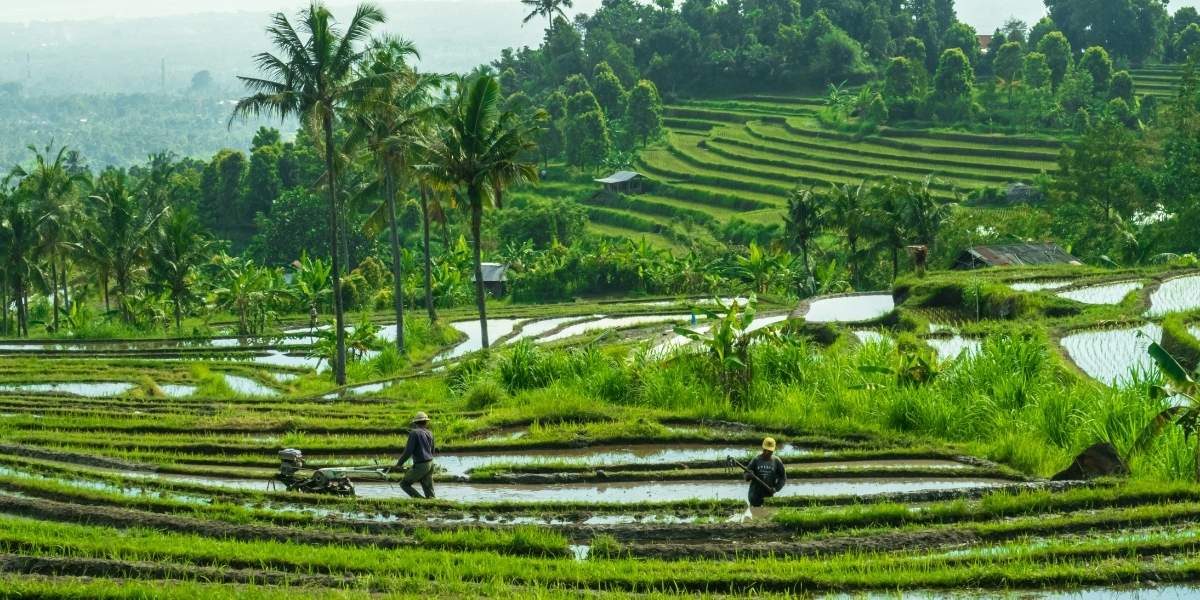How Does Agriculture Impact Water Resources Today?
The impact of agriculture on water resources is one of the most pressing environmental and economic concerns globally. Agriculture consumes more freshwater than any other sector, accounting for about 70% of global freshwater withdrawals. This extensive use affects not only the availability of water but also its quality, influencing ecosystems, communities, and industries alike. As the global population grows and climate change intensifies, understanding agriculture’s relationship with water becomes essential for ensuring sustainable food production and preserving vital water systems.
Read Also: Stars and Their Life Cycle: What Really Happens in Space
Why Is Water Essential for Agriculture?
Water is indispensable to agriculture. It supports plant growth by transporting nutrients through the soil and into crops, aids photosynthesis, and keeps plants hydrated. Livestock, too, require significant amounts of water for drinking, sanitation, and cooling. Without adequate water, crops fail to thrive, leading to reduced yields and food insecurity.
However, this reliance on water brings challenges. Irrigation, the artificial application of water to soil, is critical for crop production in many regions. Yet inefficient irrigation can waste vast amounts of water through evaporation and runoff. Globally, agriculture’s heavy water demand often competes with other sectors and the environment for limited freshwater supplies.
How Does Agriculture Affect Water Quality?
Beyond how much water it uses, agriculture impacts water quality in profound ways. The application of fertilizers and pesticides can lead to runoff during rainfall or irrigation, carrying chemicals into nearby streams, lakes, and groundwater. This runoff often contains nitrates and phosphates, nutrients that can trigger eutrophication, causing harmful algal blooms that deplete oxygen and threaten aquatic life.
Livestock farming contributes additional pollutants, including manure rich in nutrients, pathogens, and organic matter. When poorly managed, these wastes contaminate water bodies, posing risks to human health and biodiversity. Sediments from soil erosion also cloud waterways, reducing sunlight penetration and affecting aquatic plants.
What Happens When Agricultural Water Use Exceeds Sustainable Limits?
In many regions, water withdrawal for farming exceeds the natural replenishment of rivers and aquifers. This over-extraction causes water tables to drop, rivers to shrink, and wetlands to dry out. For example, the depletion of the Ogallala Aquifer in the United States and parts of the Indus Basin in South Asia threatens the sustainability of agriculture and local communities.
The environmental consequences include loss of habitat for fish and wildlife, increased salinity in soils and water, and reduced water availability for drinking and industry. Economically, farmers face higher pumping costs as water wells must reach deeper, and the risk of crop failure increases during droughts.
How Are Water-Efficient Farming Practices Evolving?
To reduce agriculture’s water footprint, many farmers are adopting water-efficient irrigation techniques. Drip irrigation, which delivers water directly to plant roots, minimizes evaporation and runoff compared to traditional flood irrigation. Sprinkler systems and center pivots with precision controls further optimize water application.
Farmers are also implementing soil health practices such as cover cropping and mulching to improve soil moisture retention and reduce evaporation. Crop rotation helps maintain soil structure and nutrient balance, indirectly supporting better water use.
The integration of soil moisture sensors and weather forecasting into irrigation scheduling ensures that water is applied only when needed, preventing waste.
What Role Do Policies and Regulations Play in Agricultural Water Management?
Policy frameworks are crucial for managing water use in agriculture sustainably. Water rights systems regulate who can use water and how much. Some regions employ water markets that allow trading of water use rights, encouraging efficient allocation.
Governments introduce regulations to limit water withdrawal during shortages and incentivize conservation through subsidies or tax breaks for adopting efficient technologies. Programs aimed at reducing runoff, like buffer zones along waterways, also help protect water quality.
International cooperation is increasingly important, especially for transboundary water basins shared by multiple countries.
How Does Climate Change Influence Agriculture’s Impact on Water?
Climate change intensifies water challenges in agriculture by altering precipitation patterns, increasing temperatures, and triggering extreme weather events. Some regions face prolonged droughts, reducing surface and groundwater availability for irrigation. Others experience intense rains that exacerbate runoff and soil erosion.
Rising temperatures increase crop water demand due to higher evapotranspiration rates. This shift requires farmers to adapt by changing crop varieties, adjusting planting dates, or improving water management.
At the same time, unpredictable weather adds risk and complexity to agricultural planning, emphasizing the need for resilient water management strategies.
What Technological Innovations Support Sustainable Water Use?
Technology is transforming how water is managed in agriculture. Remote sensing via satellites and drones monitors crop health and soil moisture, enabling precise irrigation. Automated irrigation systems integrate this data to apply water efficiently and reduce waste.
3D soil mapping and geographic information systems (GIS) help identify areas prone to water stress or nutrient loss, allowing targeted interventions. Advances in breeding have produced drought-resistant crops that require less water while maintaining yields.
Data analytics platforms combine weather, soil, and water data to guide decision-making and improve forecasting. These tools empower farmers to optimize water use and reduce environmental impacts.
How Are Community and Cooperative Models Improving Water Stewardship?
Beyond individual farms, water management benefits from collective action. Farmers form cooperatives or watershed groups to share knowledge, coordinate irrigation schedules, and invest in shared infrastructure like reservoirs or drainage systems.
Community engagement helps balance diverse water needs and resolve conflicts. Education and training programs foster adoption of water-saving practices and compliance with regulations.
Such collaborative approaches enhance the sustainability of water resources at the landscape level, supporting ecosystems and multiple users.
Read Also: How Technology Policies Shape Innovation and Society
Why Is Balancing Agriculture and Water Resources Vital for the Future?
Balancing the water needs of agriculture with environmental and social demands is critical for long-term sustainability. Water scarcity and pollution threaten food security, economic stability, and public health worldwide.
Sustainable management practices can ensure agriculture continues to feed growing populations while protecting vital water ecosystems. This balance requires ongoing innovation, policy support, and cooperation among farmers, governments, scientists, and communities.
Prioritizing water conservation and pollution reduction in agriculture not only benefits the environment but also strengthens rural livelihoods and resilience against climate shocks.








